

75 Words That Describe Smells – A Resource For Writers
Writers know that using the senses is a great way to make stories come alive. This post is about how writers could and should use words that describe smells .
Great writers use the five senses when they write. They make their stories real by allowing us to experience what their characters see, smell, hear, taste, and touch.
Using the senses is one of the best ways for writers to learn how to show and not tell.
I have written about words that describe taste , and touch , and sound in previous posts. We also have a post on words that describe colours . In this post, I am writing about words that describe smells.
About Smell
A smell is ‘the pleasant or unpleasant quality of something that you notice when you breathe in through your nose’. To smell is ‘to notice or recognise the smell of something’.
The Power Of Smell
Smell is one of the most powerful senses.
- It can transport us back in time in a moment. The sense of smell is more closely linked with memory than any of the other senses.
- It also evokes emotions. Smell is one of the most important reasons people are attracted to each other.
- It is one of our most important survival mechanisms. A bad smell warns us that we are in danger, for example, when we smell smoke or rotten food.
Writing Tip
Because of this power, writers can use the sense of smell to show a character ‘s background, or to move a plot forward.
Quite Interesting :
- You can say ‘I smelled’ or ‘I smelt’ if you are using the past tense of the verb. ‘Smelt’ is more commonly used in British spelling and ‘smelled’ is used in US spelling.
- If you lose your sense of smell you can feel isolated and cut-off from the world. The loss of the sense of smell can ‘affect one’s ability to form and maintain close personal relationships and can lead to depression’.
- Anosmia refers to the total loss of the sense of smell.
75 Words That Describe Smells
General words describing smells.
Use these words that describe smells when you are setting a scene.
- anosmic – odourless, no smell at all
- antiseptic – disinfectant smell / or no smell
- aroma – a smell that is strong but pleasant
- comforting – pleasant aroma
- delicate – subtle, faint, smell that is not overpowering
- evocative – a smell that makes you think of something, often something that you experienced in the past
- faint – a smell that is not strong
- fragrance – a sweet or pleasant odour
- heady – strongly aromatic, pungent, rich, intoxicating, spicy, piquant – not a mild smell
- heavy – a sweet and strong smell
- intoxicating – A smell that exhilarates, disorients, or excites
- laden – a literary word that describes a strong smell
- odour/odor (US spelling) – a smell
- odorous – a strong smell
- odourless – with no smell
- piquant – stinging, pungent, an aroma that tickles the nose.
- powerful – a strong smell
- redolent – smelling of something
- reek – to smell strongly and unpleasantly
- scent – a particular smell, especially a pleasant one
- whiff – a slight smell of something
Words That Describe Unpleasant Smells
- acrid – a smell that is strong, bitter, and unpleasant in your nose and throat
- damp – a wet smell
- fetid – an unpleasant smell, usually caused by decay
- frowsty – an unpleasant smell caused by a lack of fresh air
- funky – a strong and unpleasant smell
- fusty – smells old, dusty, or damp
- high – an old-fashioned word that describes a strong flavour and smell
- malodorous – scented, aromatic, redolent, fragrant, stinking.
- musty – unpleasant, stale, and not fresh
- nasty – unpleasant smell
- nauseating – a smell that causes disgust, loathing, or revulsion
- noisome – extremely unpleasant, especially because of being very dirty or having a bad smell
- overpowering – very strong smell
- pungent – a smell that is strong and sharp
- putrid – decaying and smelling very bad
- rancid – rancid food is no longer fresh and has an unpleasant smell
- rank – a strong unpleasant smell or taste
- ripe – a strong or unpleasant smell
- sickly – makes you feel sick
- smelly – an unpleasant smell
- sour – a taste or smell that is no longer fresh
- stale – not fresh or pleasant
- stench – a very bad smell, especially of decay
- stinking – an unpleasant smell
- stuffy – a smell caused by an area with no fresh air in it
Words That Describe Pleasant Smells
- ambrosial – sweet smelling, fragrant, aromatic
- aromatic – perfumed, fragrant, scented, sweet smelling, pungent, usually pleasing
- bouquet – the particular smell of a wine or flower
- delicious – a pleasant smell
- fresh – a pleasant, newly made smell that can be clean, clear, cool, crisp, refreshing, sweet, warm
- fragrant – with a pleasant smell
- perfumed – pleasant to smell because perfume has been added or used, or it has a natural perfume
- rich – a smell that is strong in a pleasant way
- savoury/savory (US Spelling) – pleasant to taste – spicy, pungent, flavoursome, and aromatic, salty but not sweet
- scented – a pleasant smell
- sweet – a pleasant smell that is sweet
- tangy – a smell or taste that is strong and bitter in a pleasant way
Words That Smell Like Something
- citrusy – characteristic of citrus fruit in scent
- coppery – smelling of copper
- earthy – smelling like earth
- fishy – smelling like fish
- floral – smelling of flowers
- flowery – a flowery smell reminds you of flowers
- fruity – smelling like fruit
- gamy – having the distinctive fragrance of game
- garlicky – smelling of garlic
- leathery – smells like leather
- lemony – smells like lemon
- medicinal – smells like medicine
- minty – smelling of mint
- musky – similar to musk in smell
- peachy – similar to a peach in colour, taste, or smell
- smoky – smelling of smoke
- woody – an earthy smell, smelling of wood
Top Tip : Find out more about our workbooks and online courses in our shop .

© Amanda Patterson
If you enjoyed this post, read:
- 106 Ways To Describe Sounds
- 20 Words Used To Describe Specific Tastes And Flavours
- 209 Words To Describe Touch
- Three Simple Ways To Show And Not Tell
- 12 Crucial Things To Remember About Setting
- Cheat Sheets for Writing Body Language
- 20 Fun Ways To Find An Idea For A Plot
- Where Should You Begin Your Memoir?
- Use These 7 Gaslighting Phrases To Make Your Antagonist More Manipulative
Sources: https://www.macmillandictionary.com/thesaurus-category/british/smelling-unpleasant https://www.macmillandictionary.com/thesaurus-category/british/pleasant-smells https://www.macmillandictionary.com/thesaurus-category/british/smelling-like-a-particular-thing https://www.macmillandictionary.com/thesaurus-category/british/describing-smells-and-lack-of-smell https://grammar.yourdictionary.com/style-and-usage/descriptive-words-for-scents.html https://world-food-and-wine.com/describing-aroma

- Description , Show Don't Tell , Writing Resource , Writing Tips from Amanda Patterson
© Writers Write 2022
Describing Smells in Writing: Mastering the Art of Sensory Language
By: Author Paul Jenkins
Posted on September 6, 2023
Categories Writing , Creative Writing
The art of describing smells in writing can elevate your work to an immersive experience for readers. The human sense of smell is closely linked to memory, making it a powerful tool for writers to evoke emotions and transport readers into the world they’ve created.
Capturing the essence of a scent in words can be challenging, but with a robust vocabulary and practiced skill, it’s a technique that greatly enhances storytelling.
Understanding the science of smell allows writers to appreciate how scents can influence our perception, emotions, and memories. Developing a robust vocabulary for scents, categorizing them, and accurately describing their intensity will enable writers to paint vivid, olfactory pictures for their readers.
Through practice, observation, and dedication to mastering this art, you will be able to create stories with rich sensory experiences that leave a lasting impact on your readers.
Key Takeaways
- Describing smells effectively in writing can create deeper, immersive experiences for readers.
- Developing a strong vocabulary and understanding the science of smell helps writers enhance their storytelling.
- Practice, observation, and a focus on accurately capturing sensory details lead to richer, more evocative writing.
The Science of Smell
The role of smell receptors.
Your sense of smell relies on specialized receptors in your nose. These receptors detect and identify various types of odor molecules present in the air you breathe. When these molecules reach your smell receptors, they send signals to your brain, which then interprets the scent. There are approximately 10 main categories of scent, such as fragrant, woody, fruity, and chemical.
Sense of Smell and Emotion
Smell has a unique relationship with emotion. Unlike other senses, the olfactory system is closely linked to the brain’s limbic system, which is responsible for processing emotions and memories. This connection essentially means that smells can evoke strong emotional responses, both positive and negative. For example, the scent of freshly baked cookies may bring feelings of comfort and nostalgia, while the odor of rotten food may trigger disgust or repulsion.
Smell and Memory
One of the most impactful aspects of smell is its connection to memory. The relationship between your sense of smell and memory is powerful due to the proximity of the olfactory system to the brain’s hippocampus and amygdala, which are vital for forming and storing memories. As a result, specific scents can bring back vivid memories, even ones that have been seemingly forgotten for a long time.
When incorporating smells into your writing, consider how they might connect with emotions and memories to create a more immersive reading experience for your audience. By effectively describing a variety of scents and the emotions they evoke, you’ll be better equipped to engage your readers and help them establish a strong connection with your narrative.
A Vocabulary for Scents
Adjectives to describe smells.
The world is filled with an incredible variety of scents, and to accurately describe them in your writing, it’s essential to have a diverse vocabulary at your disposal. By using specific adjectives, you can evoke the sensations and memories associated with different smells. Here are some categories of adjectives that will help you describe various scents:
- Fresh : crisp, clean, natural
- Earthy : loamy, musty, damp
- Floral : flowery, feminine, fragrant
- Fruity : citrusy, berry-like, zesty
- Woody : pine, resinous, bark
- Masculine : musky, leathery, smoky
- Chemical : acrid, pungent, rancid
- Sweet : honeyed, sugary, syrupy
These are just a few examples to get you started. Be creative and explore the vast array of adjectives available to you when describing smells in your writing.
Describing Smells through Associations
Another effective way to describe smells in your writing is through associations. Since our sense of smell is closely tied to memory, connecting a scent to a particular experience or situation can create a vivid and relatable description for your reader. By incorporating associations, you will make your descriptions more engaging and authentic.
For example, instead of simply stating that a room smells old, you could describe the scents of dusty, yellowed pages and mothballs, evoking the feeling of a long-forgotten library. Likewise, instead of stating that a bakery smells delicious, you could describe the aroma of warm, freshly-baked bread and buttery croissants wafting through the air.
When using associations to describe scents, consider the following tips:
- Draw upon personal experiences : Reflect on your own memories and emotions that certain scents evoke, and use them to enhance your descriptions.
- Utilize common or relatable experiences : Describe smells that your readers can easily recognize, enabling them to recall similar situations they’ve encountered in their own lives.
- Be specific and detailed : Provide rich and nuanced descriptions of smells, painting a vivid sensory picture for your reader.
Remember, the aim is to create a strong and evocative connection between your description and the scent you’re trying to convey. Experiment with different associations and adjectives to find the perfect way to capture a smell in your writing.
Categories of Smells
Natural scents.
When describing smells, think about the different categories of natural scents that you might encounter in the environment. For example, the scent of flowers can range from sweet and floral such as roses, to more earthy and green as in a pine forest. Fruity smells, like those of lemons or other fruits, often have a fresh and invigorating quality. Earthy smells are common in nature and can evoke a sense of being grounded in the environment. Use these natural scents in your writing to create vivid and authentic descriptions of your settings.
- Floral : rose, jasmine, lavender
- Fruity : lemon, apple, mango
- Green : pine, grass, eucalyptus
- Earthy : damp soil, rain, moss
Man-Made Smells
Man-made smells are those that originate from human activities or created products, such as perfume or sweat. Think about the characteristics of these scents and how they can add layers to your descriptions. Chemical smells can be harsh, pungent, or even nauseating, while perfume scents often bring sophistication or luxury. Describing the smell of sweat can help to convey an atmosphere of physical exertion, labor, or stress. Incorporate these man-made smells in your writing to enhance your storytelling or underscore certain emotions.
- Chemical : bleach, gasoline, ammonia
- Perfume : floral, musky, subtle
- Sweat : salty, metallic, pungent
Complex Scents
Complex scents are a blend of various smells that are often difficult to separate into distinct components. These scents can add depth and interest to your writing, as they are not easily identifiable or may evoke different experiences for different people. When capturing complex scents, consider the layers of smells present, such as a combination of fruity and floral notes or the merging of earthy and green scents. Describing complex scents in your writing can help create a sense of atmosphere and intrigue.
- Fruity floral : a blend of fruit and flower aromas
- Earthy-green : an intermingling of soils and plants
- Lemony-chemical : a mixture of citrus and synthetic elements
Remember to use a confident, knowledgeable, clear, and neutral tone when describing the various categories of smells in your writing. By using second person point of view (you, your, yours), your readers will feel more engaged and connected to the sensory experiences you are conveying.
Describing Intensity of Smells
Light and faint scents.
When describing light and faint scents in your writing, you can draw attention to the subtle nature of the aroma. These scents might require a character to take a deep breath to fully detect them, or they may be barely noticeable. Feel free to use words like delicate , mild , or soft to convey the lightness of a scent. For example, you can describe a gentle floral aroma wafting through the air on a spring day.
Heavy and Strong Scents
Heavy and strong scents are more distinct and tend to linger in the air or on objects. To describe these scents, choose words that evoke their intensity, like robust , rich , or even heady . Your character might walk into a room and immediately notice a heavy, smoky smell hanging in the air. Additionally, you can highlight the warmth associated with certain strong scents, like a spicy or hot aroma, to further convey their potency.
Overpowering Scents
Overpowering scents can be so intense that they dominate the senses and might even cause physical discomfort. When describing these powerful aromas, words like pungent , overwhelming , and intense can effectively convey their force. For instance, your character may feel their eyes watering and nose burning due to an overpowering scent of cleaning chemicals. Pay attention to the characters’ reactions to such smells to emphasize their impact on the scene.
Tips for Describing Smells in Writing
Relating smells to other senses.
When describing smells in your writing, try to relate them to other senses, like taste or touch. By doing this, you can create additional sensory connections for your reader. For example, you could mention that a certain smell is reminiscent of a particular taste or feeling, which can make it easier for the reader to imagine and relate to the described smell. Think about how smells often have similar attributes to tastes, like sweetness or sourness, and incorporate these into your descriptions.
Using Smells to Evoke Emotions
A powerful way to use smells in writing is by connecting them to emotions. As the sense of smell is closely linked to memory and feelings, associating a specific smell with a character’s emotions can effectively convey their state of mind and create an emotional bond with the reader. Consider how certain scents might evoke feelings of happiness, nostalgia, or even fear, and use that connection to enhance the emotional depth of your writing. For example, the smell of freshly baked bread might evoke feelings of warmth and comfort, while the smell of a damp basement might evoke feelings of unease or anxiety.
Choosing the Right Words
When describing smells, it’s essential to choose the right words to convey the message clearly. Be specific and avoid using vague or overly complex language. Instead, use concrete and descriptive terms that will paint a clear picture for the reader. Some helpful ways to do this include:
- Use adjectives : Employ a variety of adjectives to describe the smell’s qualities, such as sweet, pungent, or musty.
- Analogies and metaphors : Draw comparisons between the smell and other recognizable scents, tastes, or feelings to help the reader understand the sensory experience better.
- Onomatopoeia : Use words that imitate the sound associated with an object or action, such as “sizzle” or “pop,” to help your reader connect with the sensation of the smell.
- Show, don’t tell : Rather than merely stating that a character can smell something, describe the actual scent, the effect it has on the character, and the resulting emotions.
By following these guidelines, you can effectively describe smells in your writing, engaging your reader’s senses and creating a more immersive experience.
Examples of How to Describe Smells
Using smells in character descriptions.
To create vivid characters, writers can use descriptions of scents to convey personality traits and evoke emotions in the reader. For example, you can describe a character’s personal fragrance, such as earthy, floral, or crisp. These words can help characterize them as masculine, feminine, or even androgynous.
Here are a few examples of smells used in character descriptions:
- Her scent was a delicate mixture of lavender and vanilla, making her presence soothing and comforting.
- He carried the unmistakable aroma of fresh pine, evoking feelings of being in a forest.
- Their scent was a confusing blend of citrus and cinnamon, giving them an air of mystery and unpredictability.
Setting the Scene with Scents
In addition to character descriptions, you can use smells to help set the scene or create a mood in your writing. Descriptions of scents can transport your reader to different environments, providing an immersive experience and enriching your narrative.
Here are a few examples of using smells to establish a scene:
- The sweet smell of freshly baked pastries greeted her as she entered the cozy bakery.
- A salty sea breeze filled the air, transporting her back to summer days spent at the beach.
- The pungent odor of gasoline and burning rubber filled the bustling garage, immersing the reader in the world of auto repairs.
While describing smells in your writing, remember to keep the tone confident, knowledgeable, neutral, and clear. In doing so, your descriptions will be more effective and enriching for your readers.
Common Pitfalls in Describing Smells
Overuse of adjectives.
One common pitfall in describing smells is the overuse of adjectives. While adjectives are necessary to convey the intensity or quality of a smell, too many can leave the reader overwhelmed and confused. It’s important to strike a balance and use adjectives judiciously. Try to focus on choosing a few strong, specific adjectives that accurately convey the scent you’re describing. Using too many adjectives can also make your writing appear less polished and professional.
Describing Smell without Context
Another issue writers encounter when describing smells is neglecting to provide context. Smells don’t exist in isolation; they are often tied to a specific setting or situation. To make your descriptions more effective, try to include contextual details that will help the reader imagine the scent more vividly. For example, instead of simply describing a smell as “musty,” you might indicate that the musty odor is reminiscent of a damp, old basement, which not only grounds the scent in a physical space but also allows your reader to better visualize and understand the smell.
Ignoring the Readers’ Experiences and Associations
Finally, it’s important to consider your readers’ experiences and associations when describing smells. People’s interpretations of scents can vary widely due to their personal experiences and cultural backgrounds. What smells delicious to one person might be off-putting to another. In your descriptions, try to take these differences into account by using relatable, universal examples that most readers will understand. At the same time, avoid using highly subjective or personal associations that may not resonate with everyone. By keeping the reader in mind and considering their experiences, you can create more effective, engaging descriptions of smells in your writing.
Frequently Asked Questions
How can i effectively convey scents in my writing.
To convey scents effectively in your writing, you should provide a vivid and specific description that helps the reader imagine the smell. Think about the different aspects of the scent – its intensity, its duration, and the sensations it evokes. Make connections with memories or emotions, and use sensory terms and similes to enhance the description.
What are some sensory terms used for describing various smells?
Sensory terms used for describing smells can be grouped into different categories, such as
- Floral (e.g., rose, jasmine)
- Fruity (e.g., citrus, berries)
- Earthy (e.g., damp soil, petrichor)
- Spicy (e.g., cinnamon, cloves)
- Sweet (e.g., vanilla, caramel)
- Pungent (e.g., ammonia, vinegar)
These terms help you create a more detailed and immersive experience for your reader.
What are some ways to describe a compelling fragrance?
When describing a compelling fragrance, consider:
- Its main scent (e.g., lavender, sandalwood)
- Its subtler notes (e.g., hints of lime or vanilla)
- The way it evolves over time (initial burst, heart notes, and base notes)
- The feelings it evokes (e.g., warmth, calm, energy)
Use comparisons and similes to make the description relatable and engaging.
How can I illustrate the smell of a person or an environment?
To illustrate the smell of a person or an environment, focus on the most characteristic and dominant scents associated with them. For a person, consider their perfume, body odor, or even the laundry detergent they use. For an environment, think of the combination of smells present, such as the saltiness of the sea, the vegetation, or the exhaust fumes in a city. Use sensory details and create a vivid description that transports your reader to the scene.
What phrases can be used to describe unpleasant odors?
Here are a few phrases you can use to describe unpleasant odors:
- Rancid or sour
- Musty or stale
- Overpowering or suffocating
- Acrid or sharp
- Fetid or rotten
Be creative with your language and comparisons to help your reader understand the intensity and nature of the unpleasant odor.
How can I incorporate the sense of smell into descriptions of natural surroundings?
To incorporate the sense of smell into descriptions of natural surroundings, focus on the most characteristic scents of the setting. Think about the smells associated with the place – the earthy aroma of a forest, the fresh scent of a meadow, the salty tang of the ocean, or the fragrant blossoms in a garden. Use descriptive language and draw connections with memories or emotions to enrich your depiction and engage your reader.
Sniff This: The Ultimate Guide On How To Describe A Smell

The nose can recognise more than one trillion distinct scents.
The sense of smell is incredibly powerful. It can evoke memories and emotions, and sometimes we even use smells to describe things we can't see.
But what do we do when we want to describe a smell to someone else? How can we accurately capture the aroma of a rose or the fragrance of a newly-washed shirt in words?
Describing scents can be frustrating, I know. Which is why I’ve written this article diving into how we can describe smells effectively as well as compiled a word list of scent-related words.

What exactly is a smell?
A smell is created when molecules interact with the receptors in our nose.
These molecules can come from anything: foods, drinks, plants, flowers, pets, and even people. Once the molecules reach our nose, they interact with the receptors in our nose, which send a signal to our brain. This is what we perceive as smell.
Our sense of smell is directly connected to the brain's limbic system, which is responsible for controlling our emotions and memory. That's why certain smells can take us back to a certain time or place in an instant.
The sense of smell is often overlooked, but it is one of the most powerful ways to evoke memories and emotions.
Different types of smells
You might be tempted to say "it smells like a rose," but that's not very helpful to someone who doesn’t know what a rose smells like. Also, there are different types of rose scents— musky, floral, sweet, and the list goes on.

When you come across a smell that you can't quite put your finger on, try to identify which category it falls into. This will give you a place to start when describing it to others.
“All smells can be classified as one of 10 types of aroma.”
After years of research, scientists have concluded that 10 is the minimum number of categories that they can categorise scent into: fragrant, woody/resinous, fruity (non-citrus), chemical, minty/peppermint, sweet, popcorn, lemon, pungent and decayed.
Categorising a scent is just the tip of the iceberg. A lot more can be done to immerse your reader’s imagination.
How do you describe a smell in writing?

When describing a smell, try to think about all the different aspects of it. What does it remind you of? What sensations does it evoke?
The more specific you can be when writing, the easier it will be for your readers to visualize and understand what you are trying to communicate. Using a dictionary can help you find the precise words and meanings that accurately convey your thoughts. However, there is no one right answer to describe a smell. It's all about using your sensory words to create a vivid picture in the reader's mind.
Here are some approaches you can take when starting to think about how to describe a smell.
1. A smell is often described with adjectives
We often smell things before we see them, and smells can evoke incredibly strong memories and emotions. That's why we use adjectives to describe smells— they create a vivid picture in our minds.
Adjectives can also help us communicate our reactions to smells. For example, if you walk into a room and smell cinnamon, you might say "that's a cozy smell." If the smell is unpleasant, you might say "that room reeks!”
These adjectives are used to describe the smell's intensity, it's qualities, or how it makes you feel.
Describe any smell with Hypotenuse AI
Simply give our AI a few keywords, and watch us turn it into surprisingly great blog posts, product descriptions and marketing copy.
2. Categorizing them according to the 5 cardinal tastes

Qualities of a smell can be broken down into the five cardinal tastes: sweetness, sourness, bitterness, saltiness, and umami. You can’t exactly smell these, but you can experience the sensation of these tastes.
This is how you might describe these smells when writing:
- Sweet: sugary, saccharine, sickly
- Sour: balsamic, tart, acidic
- Bitter: earthy, roasted, powdery
- Salty: aquatic, marine, ocean
- Umami: meaty, savory
3. Diving into the nuances of scent
You could also try to describe the nuances of the scent: what are the individual notes that make up the overall aroma?
Some adjectives to describe the nuances of scent:
- Flowers: soft, delicate, powdery
- Citrus fruits: tangy, tart, acidic
- Woods: earthy, musky, deep
- Spices: warm, fragrant, inviting
4. Describing a Scent by Intensity
You can also describe a scent by its intensity: is it light and airy, or heavy and earthy?
Words to describe intense smells:
Words to describe weak smells:
5. Describing a Scent Using Feelings and Emotions

Identifying feelings and emotions that a scent gives rise to can help make your description more evocative.
This helps with whether you want your smell to have a positive or negative connotation attached to it. For example, an intense smell may be “rancid” to some (negative connotation), and just “sharp” to others (neutral connotation)
- Positive words might include "invigorating," "relaxing," and "energizing."
- Negative words might be "stinky," "musty," and "foul.”
List of words to describe pleasant scents:
List of words to describe bad smells:.
- naueseating
- overpowering
- overwhelming
- sickeningly sweet
- suffocating
Of course, scents are not only categorised into pleasant and unpleasant smells. Let’s look at words describing some common smells to see how we can stimulate your imagination.
Words to describe the smell of rain
The smell of rain right after a storm is a scent that many of us are familiar with.
Petrichor ( noun) the pleasant scent when rain falls on dry soil.
Words to describe the smell of food
Assuming you're describing food that smells good, here are some adjectives you can use.
- Mouthwatering
- Irresistible
- Scrumptious
Words to describe the smell of alcohol in writing
The use of alcohol is pervasive, from being used as a disinfectant in hospitals, to being consumed in our drinks.
Words to describe the smell of alcohol in a hospital setting:
Words to describe the smell of alcohol breath (drunkard’s breath).
Smell is one of the most evocative senses, conjuring memories and affecting moods faster than any other sense.
Whether you're describing a smell you love or trying to capture a scent for a creative project, it's important to know how to describe it in a way that accurately conveys its essence. When describing a smell, it's important to be as specific as possible, and to use adjectives that will help the reader to imagine the scent.
With these tips, you'll be able to capture any smell you encounter and make your readers feel like they can smell it too.
Try Hypotenuse AI's text generator to fully unlock the potential of your olfactory descriptions. Engage your audience and bring scents to life with enhanced writing. Get ready to captivate readers with every description.

Related Articles

Top 50 Commonly Confused Words in English

How to Write a Blog Post Outline in 8 Easy Steps

How To Write A Company Bio (with examples)
Join 500,000+ growing brands with hypotenuse ai..
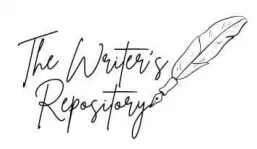
Smell of Nature: Descriptions that Appeal to the Senses (2024)
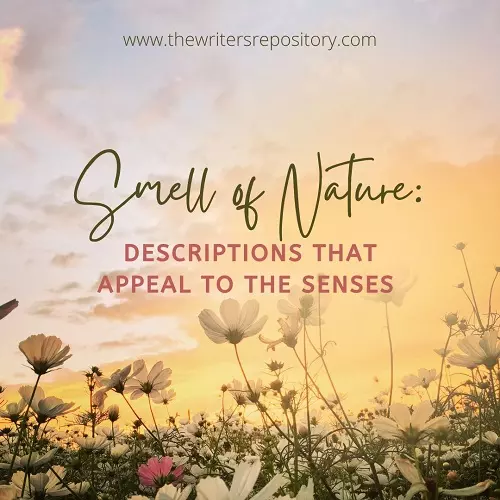
Are you looking for descriptions for the smell of nature? You’ve come to the right place! From mildewed to petrichor, we have all the words you need to describe the beautiful natural world that surrounds us!
Jump to Section
Smell as a Potent Descriptor in Writing
Examples of natural smell descriptions in writing, fresh and light, deep and pleasant, richly unpleasant.
Related posts: Vivid Description in Creative Writing Examples
This post may contain affiliate links, which means that I may receive a commission, at no cost to you, if you make a purchase using these links.
The sense of smell is known as the strongest sense for memory inducer. When your writing contains descriptions of various smells, you have the potential to trigger your reader’s most nostalgic memories; hence, your writing will stay with them longer !
Inject your writing with the smell of nature whenever appropriate, be it when your character is out exploring nature, or to draw comparison / parallel between their current situation and the natural world around them.
Let’s look at two examples to illustrate this point.
1. This first example lets us experience the world as the character in the story experiences it. The rich description transports us to Louisiana in September, how heady and overwhelming it is, just as the author describes it.
Louisiana in September was like an obscene phone call from nature. The air–moist, sultry, secretive, and far from fresh–felt as if it were being exhaled into one’s face. Sometimes it even sounded like heavy breathing. Honeysuckle, swamp flowers, magnolia, and the mystery smell of the river scented the atmosphere, amplifying the intrusion of organic sleaze. It was aphrodisiac and repressive, soft and violent at the same time. – Tim Robbins, Jitterbug Perfume (1990)
2. This second example draws a parallel between what the character is feeling and the world around them. Autumn smelled acrid to the character in this story, and it mimicked the fear he felt inside.
The acrid scents of autumn, reminiscent of slinking beasts, make me fear. – D.H. Lawrence, The Complete Poems (1994)
Three Broad Categories of Natural Smell
Do you know that human’s olfactory sense can detect 1 trillion odors ? It’s no surprise that we frequently struggle to describe the smell of nature, with its plethora of colorful scents. But, a good writer must try, right?
Let’s classify natural smells into three categories . Here they are, with some alternative words to describe them.
When I think of nature, my mind automatically goes to an open air, green area with lots of sunshine, free of manmade buildings. Meadows, forests and mountains are some examples. The smells associated with such places are fresh and light.
Another way to say this would be:
– Airy : a flighty kind of smell that just wants to lift you up to new heights. – Alpine : reminiscence of high mountains. – Clean : that odorless smell that fills up the lung when you’re surrounded by nature. – Crisp : a sense of cleanness that you could almost bite into, like biting into a particularly refreshing chunk of apple. – Fresh : the kind of invigorating smell that overtakes you as if you’re standing beside a waterfall. – Fruity: the sweet, refreshingly light smell of fruits. – Minty : a smell that almost pierces your nose and fills you up with cool air. – Ozonic : fresh and clean air, especially the one breathed at the seaside. (Ozone in informal British refers to fresh air.) – Piney : a smell that calls back to the smell of pine trees in the forest, it’s peppery with a dash of minty and at the same time is said to be a good antidepressant. – Sun-baked: a clean kind of smell that is dry and a bit musky.
The smell of rain as it starts to hit dry earth, or the sea breeze at the hull of a ship. They stay with you for a long time and yet do not repulse you. Oceans and jungles are places that tend to carry these deep, pleasant smells.
Here are some words that can describe that deep yet pleasant scents of nature:
– Ambrosial : succulently fragrant or sweet. – Earthy : the smell of freshly dug soil. – Damp moss : the forest aroma after being steeped in the rain all day long. – Floral : richly sweet, flowery scents. – Myrrhic : a pleasant myrrh fragrance. (Myrrh is a sap-like substance or resin from the bark of certain trees. Furthermore, myrrh itself is described as warm, woody and aromatic with a hint of pungency.) – Musky : an animalistic scent that is earthy and woodsy, it’s a scent that’s close to human skin but more intense and heady. – Oceanic : the salty, breezy scent of the sea. – Petrichor : the light smell of rainwater as it makes contact with dry earth. – Peppery : a deep, aromatic smell that is a little pungent and musty, reminiscence of pepper. – Resiny : resin-like smell – Smokey : a deep woodsy scent with a hint of burnt matter. – Spicy : a strong, aromatic sweet scent that is reminiscent of hot spices. – Tang : a refreshingly sharp aroma. – Tropical : a sweet and strong scent that’s coming from a combination of tropical herbs, spices and fruits. – Woodsy : the collective smell coming from the various growth you might find in a forest. – Zesty : a smell akin to spicy.
BEFORE WE CONTINUE…
It could be time to make an investment in a quality dictionary if you need extra assistance to reference that particular term that keeps eluding you. Check out a few options below:
1. This Thesaurus broadens your ability to describe the world around you through seeing, hearing, touching, tasting, and smelling.
PLEASE CLICK ON THE IMAGE FOR MORE INFORMATION!

2. The book below is a fascinating, weird, and awe-inspiring investigation of scent . Read what Jack Hitt (author of Bunch of Amateurs) said about this book: “The nose on your face is the Buckingham Palace Guard of your body, the maitre d’ of all taste, as well as the seducer of your imagination, and memory—and Jude Stewart has charmed them all into a wicked, poetic and illuminating tour of their mysterious domains.”

NOW, to continue down our list…
Lastly, nature can smell unpleasant, too. Oceans, swamps, natural springs, and many other natural places sometimes carry pungent aroma be it from decomposing organic matters or other natural, earthy elements. Here are some words to describe them:
– Acrid : sharp and harsh smell, – Cadaverine : a foul-smelling diamine produced by protein hydrolysis during putrefaction of dead organic matters. – Effluvium : a foul-smelling gas or vapor. – Fetid : foul-smelling or stinking. – Fishy : a smell reminiscent of fish. – Fusty : stale-smelling or stuffy. – Gamey : the strong smell of game meat. – Hircine : an odor reminiscent of goat. – Marshy : distinctive and pungent “rotten egg” smell. – Mephitis : a strong smell, especially emitted from the earth. – Mildewed : that scent when an organic matter is steeped in wetness for too long that it has gone stale and started decomposing. – Musty : the deep scent of decaying matters and rotting woods. – Oceanic : a salty, breezy seaside smell with hints of fishy and rotten smell. – Stale: the smell of old, forgotten, and stagnant matter. – Stenchy: having a stench, foul odor. – Putrid : the stench emitted by decomposing organic matter. – Rancid: rank in smell. – Reek: strong, unpleasant smell. – Sulphury : sharp, pungent smell.
As a closing, when I feel stumped in describing natural smells, what I love to do is to browse through catalogs of perfume descriptions and let the words inspire me .
I hope the list of smell descriptions of nature listed above is useful for you. For a similar post, head to Vivid Description in Creative Writing Examples
Or if you’re looking for writing prompts, check out Surreal Writing Prompts , Unique Zombie Ideas , or browse our Story Ideas & Writing Prompts category for more ideas.
Until next time!
Related Posts

Vivid Description in Creative Writing Examples (2024)
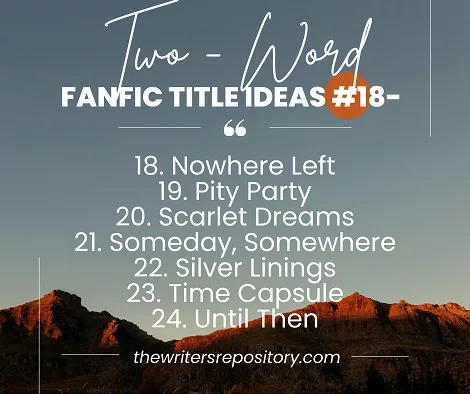

120+ Best Fanfic Title Ideas (2024)
Leave a comment cancel reply.
You must be logged in to post a comment.
Enjoy this blog? Please spread the word :)

30 of the Best Words to Describe Smell in Your Writing
By: Author Hiuyan Lam
Posted on Last updated: October 20, 2023
Categories Vocabulary Boosters

As a writer, you’re expected to have a wider vocabulary than most to paint vivid pictures in the minds of your readers; however, it can be more difficult to find accurate words to describe smell than sight, touch, sound, or taste.
You may be tempted to use the following words to describe smell- delicious/good, or bad/awful- but surely you can paint a better picture than that. We’ve compiled a list of words to describe various smells/odors to help improve your writing.
Here are 30 of the best words to describe smell:
6 words to describe delicious food
When you write about delicious food, your choice of words should make mouths water! Here are 6 words to describe smell in this context:

6 words to describe smell of awful food
Stinky foods can ruin your appetite and can even upset your stomach. Let your readers know how bad it is with these 6 words to describe smell of awful food:

You May Also Like:
25 of the Best Words for Writers to Describe Fire

E.g. “The goat smelled so raw I felt like I was lying amongst a herd.”
About the smell of a person’s perfume
People wear perfume to establish a signature scent and to help them smell good all day long. Here are 6 words to describe smell of one’s perfume.

25+ of the Best Words to Describe Taste of Food

Words for a person’s bad smell
The world would be a much better place if everyone practiced good hygiene, but unfortunately, this is not so. Here are 6 words to describe smell of these people:

25 Perfect Words to Help Describe Your Pain and Suffering

6 words to describe an actual perfume
If the perfume is not being worn by someone, there are still words you can use to describe their scents. Here are 6 words to describe smell of perfume:

When writing, you don’t have to use complicated words to describe smell. The whole point is making the reader relate to what you’ve written to create an effective scene.
Writers in the Storm
A blog about writing.

How to Write the Sense of Smell
by Ellen Buikema

Great writers make their stories authentic by allowing us to experience what their characters hear, see, smell, taste, and touch—capturing the senses so we are fully involved. Adding sensory details about smell into your writing creates a stronger story bond for your reader.
Scent memory is potent.
Memories fade as time passes, but a faint whiff of a loved one’s perfume can send your mind’s eye smack into a scene from a forgotten past. Sense of smell is a person’s most robust sense. You can be in a familiar place with a blindfold on and your nose will let you know where you are.
- The sense of smell is more closely linked with memory than any other sense.
- It brings emotions to mind. We are attracted to each other by smell.
- It helps us survive. A foul smell warns us of danger, like when we smell food gone bad or smoke choking the air.
Sensory unit in the classroom.
I introduced my young students to lessons on the five senses. For the sense of smell, I used those old black plastic film canisters with tiny holes poked in the lid so there was no way for the students to peek at what they were going to smell.
Every canister was labeled with a number. Each child checked out the canisters one at a time to avoid copycatting. Their answers were noted and discussed later during circle time. I enjoyed watching their facial expressions during whiffs. Everyone smiled at the cinnamon oil.
One child smelled my neck and said, “ You smell like my auntie. I don’t know why.” Must have been the cocoa butter.
Writers can use the sense of smell to show a character’s background or to move a plot forward.
Say your main protagonist is a child in an orphanage trying to come up with a way to run away from her situation. A fire breaks out somewhere in the building. She smells smoke, alerts whomever she can to the danger (she is a good-hearted character). Recognizing her chance to leave in the chaos, she grabs her belongings and runs, thereby moving the story forward.
Ways to develop a sense of smell in writing.
Smelling danger.
Our brains are wired in a way that makes us hyper-alert to unfamiliar sensory information, including smells. If you want to unsettle you characters, add in rotting, chemically, goosebump raising smells into your story.
- Our sense of smell adjusts and after a while there are scents you won’t notice.
- Walk back inside and take note of what you smell.
- Open up the refrigerator. Do you have a science experiment brewing in the rotter? (In our house that’s the drawer where food is forgotten and goes to die.)
- Think about how certain smells, known and unknown, might help to define your characters.
- Write a paragraph about the smells your character loves and hates.
Smelling recall of another time, person, or place
Smells can cause flashbacks to warm, wonderful times or a place of horror. The same smell can bring joy or pain dependent upon the individuals experience at the time they were exposed to that particular odor.
Some people love the smell of lilies. I cannot stand them. To me they reek of death. I don’t know why, and probably would need hypnosis therapy to figure it out.
- Your best friend’s house from childhood
- Family homes
- Movie theaters, drive-in and indoors
- What smells do you associate with those places in time? What emotions?
- Write a paragraph about the odors and try to call to mind the emotion without calling it by a specific name.
Many authors use sensory writing well.
The following quotes are from writers who use the sense of smell effectively..
“The smell of a grow room is the scent of transpiration, of fecund exertion. It’s the trapped sweat of a high school locker room, the funk of a hockey jersey steaming on a radiator.” Bruce Barcott, Weed the People
“We moved on the Tuesday before Labor Day. I knew what the weather was like the second I got up. I knew because I caught my mother sniffing under her arms. She always does that when it’s hot and humid, to make sure her deodorant’s working. I don’t use deodorant yet. I don’t think people start to smell bad until they’re at least twelve. So I’ve still got a few months to go.” Judy Blume, Are You There God? It’s Me, Margaret
“Chili dogs, funnel cakes, fried bread, majorly greasy pizza, candy apples, ye gods. Evil food smells amazing -- which is either proof that there is a Satan or some equivalent out there, or that the Almighty doesn't actually want everyone to eat organic tofu all the time. I can't decide.” Jim Butcher, Side Jobs: Stories from the Dresden Files
“I emitted some civetlike female stink, a distinct perfume of sexual wanting, that he had followed to find me here in the dark.” — Janet Fitch, White Oleander
“So when I closed my eyes, when I drifted into a half dream and found myself in that underpass, I may have been able to feel the cold and smell the rank, stale air, I may have been able to see a figure walking towards me, spitting rage, fist raised, but it wasn’t true.” Paula Hawkins, The Girl on the Train
“Mr. Leopold Bloom ate with relish the inner organs of beasts and fowls. He liked thick giblet soup, nutty gizzards, a stuffed roast heart, liver slices fried with crust crumbs, fried hencods’ roes. Most of all he liked grilled mutton kidneys which gave to his palate a fine tang of faintly scented urine.” James Joyce , Ulysses
"After a while, I stretched out on one of the benches and closed my eyes. The kerosene smelled like lacquer, and I kept feeling waves of nausea. My bones were cold. I could isolate the icy scent of pine trees that sneaked through the walls. Sometimes grace is a ribbon of mountain air that gets in through the cracks." Anne Lamott, Grace (Eventually), Thoughts on Faith
“…ripe piss, ancient cabbage, dead and rotting rat — was on Danny's skin, in his hair, in the fibers of his suit; Varian inhaled that scent like a penance.” Julie Orringer , The Flight Portfolio
“There is little difference between the Zulu warrior who smeared his body with Lion’s fat and the modern woman who dabs hers with expensive perfume. The one was trying to acquire the courage of the king of beasts, the other is attempting to acquire the irresistible sexuality of flowers. The underlying principle is the same.” Tom Robbins, Jitterbug Perfume
Other Links we love:
- Here are some Fun Smelly Facts .
- Check out 30 of the Best Words to Describe Smell in Your Writing .
If you want to make your readers feel what you’re describing, use the power of scent. Understanding how compelling the sense of smell can be, use it to entice your reader.
What sense do you use when writing? What writers do well with sensory writing? Do you have any examples you’d like to share?
* * * * * *
About Ellen

Author, speaker, and former teacher, Ellen L. Buikema has written non-fiction for parents and a series of chapter books for children with stories encouraging the development of empathy—sprinkling humor wherever possible. Her Works In Progress are, The Hobo Code , YA historical fiction and Crystal Memories , YA fantasy.
Find her at http://ellenbuikema.com or on Amazon .
Top Image Photo by samer daboul from Pexels
23 comments on “How to Write the Sense of Smell”
That was a fun exercise. Thanks!
I went through my debut novel with the search function, and found 54 instances of using smell, odor, aroma, wafted, or scent. I have a specific step in my process which has me consider 1) the senses the character is using, and 2) the senses I hope to elicit in the reader for every scene. The only duplicates were pine-scented cleaner and the outdoor smell of real pine trees. Not bad.
I make an effort to consider all the senses, regular and ESP and kinesthetic, but only choose a couple at a time for a scene. A laundry list is appropriate very rarely.
Here's an example of a sweater left behind by Andrew O'Connell at Kary's house when he stayed there, one of two similar fisherman's Irish sweaters his mother knit for him. It has to go back with his friend and manager. The last sentence is in italics in the book as a direct thought.
Her fingers dared. She pulled the rough heavy sweater into her lap, tidied the folds, tucked the long sleeves neatly into the bundle. The faint aroma of lanolin thrust her backbrain into memories of nursing… Such a long time ago. She restrained herself from burying her face in the woolen bulk. She refused to name the other scent. It will have to go back. Pride's Children PURGATORY.
I picked that one because of the double use of smell.
It's interesting that you even use a sensory check as part of your writing process. 54 references is impressive. I'm wondering whether you search using the words you mentioned: smell, odor, aroma, wafted, or scent? That's a great tip to figure out how smell is represented in one's manuscript. Thanks, Alicia! Kris
Yes - I searched with all the words I thought might find me scent references, and was pleased to find so many.
I have a damaged brain (ME/CFS), and the only way I can write is to have a detailed written process - a specific set of prompts/questions that I've developed since I started to write. That way I can compartmentalize each and make sure it at least gets considered for a scene.
If curious, here's the link: https://liebjabberings.wordpress.com/2013/08/15/left-brain-right-brain-hemisphere-wars-and-writers-block/
I know scientists no longer consider the left/right dichotomy a physical one, but it still works for me as a metaphorical one, switching from a logical to an intuitive approach and back in a regular alternation when I get saturated on one or the other. It probably makes me slower than I might otherwise be, but it compensates for my deficiencies enough to write complex fiction.
I love your example, Alicia. It pulls me right into the scene and I truly feel for her, especially as a mom.
I hadn't thought about it before but a balance must be had between too much and too little sensory information in a scene. Thank you for bringing that point up!
Or possibly you're writing pure literary fiction? And the point IS the sensory information?
I don't - I'm too wedded to plot and characterization - but it is a viable option, and there are some beautiful examples.
I learned that one from Sol Stein: two to three sensory details seem to be about right, and one should be familiar and one fresh. Not a rule so much as a guideline, because sometimes the best effect is to pile on more, sometimes to select one perfect detail. Or you start to sound like a robot. That's one of the things I love about writing, reaching for that balance.
Thanks for this, Ellen. I use smells often in my writing--it seems to be the most underutilized sense by new writers, IMHO. Great links, too!
Hi Karen, I'm glad the links are useful!
My early writing had a serious lack of sensory information. Critique partners modeled better work, showing what I'd missed. Adding sensory details makes a big difference.
HI Ellen, I loved all the examples, especially the Anne Lamott one: Sometimes grace is a ribbon of mountain air that gets in through the cracks. Her contrast to kerosene and lacquer is powerful.
Thanks for the reminder to incorporate this sense into our writing. It can ramp up the intensity or deepen the solitude, all with a reference to smell.
Thanks, Kris!
There's nothing quite like sense of smell to entice us into a story.
I especially like Anne Lamott's quote.
When I left home for college my mom gave me strawberry-scented stationery so I could write her. To this day, the smell of strawberries makes me homesick.
Wow, Jeanne what a powerful connection!
Excellent advice. The sense of smell IS a powerful one. I had to go through my current ms following Alicia's example. I found 17 uses of 'aroma', 13 of 'smell' and 6 of scent, and a smattering of others.
My takeaway from this post: Tie the sense of smell to an emotion for more power. My current wip is set on a cattle ranch. The heroine is a city girl, so she's going to notice the smells. She also spends time with the ranch cook--more opportunities to work in the sense.
Ooh, Terry you'll have a lot of fun with this. I can tell already.
I grew up close to Chicago and never experienced the intense scent of cow patties from a dairy farm until middle school.
You'll have to let us know how your heroine deals.
Thanks for this one, Ellen! I love to use smells in my writing. You're right on the money about them being a powerful memory trigger that can suck a reader right into a scene. One of my favorites from my own work comes from my first book, Killing Karma. It describes James' first step into a thrift store.
A quick twenty-minute drive brought James to his first thrift shop experience. Walking through the door, the realization hit him; this was not going to be his typical shopping trip. The first thing to jump out was the smell. It wasn’t the crisp linen and perfume scent he encountered in the department stores he occasionally shopped in with his mother. It reeked of something a little more . . . well . . . old. The smell reminded him of the house where the aging neighbor lady used to care for him while his mother worked. It made the hair on the back of his neck stand up.
Great example, Eldred!
I really enjoyed reading your Karma series.
What powerful examples you used, Ellen. Wow. Has me looking through my manuscript for those hits. And I think I did okay. a total of 93 references to aromas, scents, smells, stench, and stink. Helps to have your characters explode a stink bomb. lol
A stink bomb. Wow. I'll bet there were some interesting reactions to that Lynette! I was concerned that I overdid the examples. LOL. I guess I did okay.
I've started reading through each scene and noting where I need more sensory input. The editing process seems never ending.
Yes. The reactions were the fun part.
You did more than okay with examples. And while I agree the editing process seems never ending, I strongly suspect you'll add the right amount of sensory input and find the end.
I think when you can describe the smells in a book and the reader is transported to the place or reacts to the smell, you've done your job.
My books are more apt to have smells of florals, food, and perfumes/colognes, etc...
[…] https://writersinthestormblog.com/2021/11/how-to-write-the-sense-of-smell/ […]
How to Describe Smell in Writing Vary your vocabulary. Instead of saying a character smelled something, describe the specific redolence they encounter. ... Link other senses. Scent is linked to our other senses, particularly taste. ... Think outside the box. Sometimes smells surprise us. ... Describe scents in detail.
Some common synonyms of stinking are fetid, fusty, malodorous, musty, noisome, putrid, and rank. While all these words mean "bad-smelling," stinking and fetid suggest the foul or disgusting.
Subscribe to WITS
Type your email…

Recent Posts
- 6 Powerful Techniques to Escape Tedious Descriptions
- How to Write Irresistible Character Relationships, Part Two
- My Easiest Tool for KDP Keywords and Categories
- Make Your YA Story Feel Real
- How to Write Poetic Prose
- Ellen Buikema
- Jenny Hansen
- Lynette M. Burrows
- Lisa Norman
Copyright © 2024 Writers In The Storm - All Rights Reserved
- Skip to primary navigation
- Skip to main content
- Skip to footer
Enchanting Marketing
Writing advice for small business
How to Write Evocatively & Pull Readers Into Your Story: 3 Nose-Tickling Examples
by Henneke | 36 enchanting opinions, add yours? :)
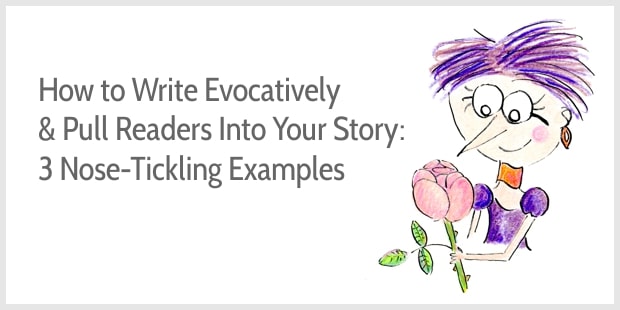
It happened to me recently.
I was reading the book Revelations in Air by Jude Stewart.
As I’m reading, I feel like I’m standing next to her smelling the orange she’s peeling. I notice a whiff of lavender as she dabs the scented oil on her wrist. Oh, and the smell of freshly-cut grass!
How can she describe smells so fabulously?
I quickly let go of my envy and begin to study her writing: What makes Stewart’s descriptions so evocative? What can I learn from her?
Describing aromas may seem like a niche writing technique but the lessons apply to almost any writing, fiction or non-fiction.
Shall we look at some examples first?
Example 1: The aromas of peanut butter
Here’s how Stewart describes peanut butter:
It’s rich, smoky, surprisingly deep. The scent stacks in clear layers: at the top floats a note of honeyed sweetness. A heavy swirl of oil forms the grounding base note. In the fat middle, it’s all sticky, particulate peanuts: a smell that matches the taste with uncanny fidelity.
When I read this description, I think: Yes, I know the fat middle with the peanutty smell. I also know the oily base note. But the sweetness? I’m not sure.
I grab a pot of peanut butter and sniff. At first, I only smell peanuts and oil. Then I let the smell come to my nose more quietly, and there it is: Sweetness.
To describe a smell more accurately, you first have to sniff more attentively. You have to stop and pay attention. That’s how you can detect the different layers of a smell—honeyed sweetness, oily base, and sticky peanuts.
Example 2: The smell of petrichor
Petrichor is the smell of rain after a long period of dry weather. Stewart starts her description like this:
Petrichor, the smell of parched earth after rain, is immersive, roomy enough to move around in. Its bright mineral tang is edged with vegetal green. There’s a hint of sourness, haloed by fresh water droplets. Petrichor lifts the ground, with all its smells, closer to the nose. It’s as if the earth has exhaled. Because this smell emanates from millions of pinpoints at once, petrichor has a stereoscopic quality. Inside the smell, each moment seems to dilate and slow. It fills the air with relief.
Describing a smell can be tricky. In his book An Immense World , Ed Yong suggests the English language has only 3 dedicated words for smells : “stinky, fragrant, and musty.” So, we borrow words from other senses, use metaphors, or name the source of a smell (e.g., rose). In the above description of petrichor, the phrases mineral tang and sourness describe tastes as much as (or probably more than) smell.
Stewart turns her description of petrichor into a 3-dimensional experience: It’s immersive and roomy enough to move around in. It’s as if the earth has exhaled (such a lovely example of personification !). The air is filled with relief.
Isn’t that lovely?
Example 3: The scent of roses
How would you describe the scent of roses?
Perhaps: Flowery, a tad sweet. The roses in our garden are still in bud, so no chance to sniff their scent for a more accurate description. I’m inclined to suggest that roses smell like … eh … roses, yeah?
Here’s how Stewart starts her description of the scent of roses:
At first the smell of roses fills the nose in a giddy rush, sweet and headlong. The burst of luxury feels total. But that rush rapidly settles down and shades into a regal stillness. You become aware of joining a vast throng of admirers in a shared contemplation. The scent’s wildness doesn’t stay wild for long in the nose; inevitably, one recalls one’s grandmother in her church best. Yet behind its rounded, classical quality, the scent still emanates some heat, prickly and pollen-like. It evokes late summer, lazily crawling insects, the finery of silken petals rotting under a bush, the sprawl of untidy nature. Inside the smell of roses one senses the momentary quality of life, how rapidly loveliness blossoms and fades, the nearness of beauty to rot.
Stewart relates how she experiences the scent in two stages: The giddy rush that settles down into a regal stillness. Next, she describes the memories the scents evoke: Grandmother, late summer, crawling insects. And lastly, there’s a philosophical note on the fading of beauty and the momentary quality of life.
Smells can ground you into the present. Forget all your worries. Forget all your stress. Instead savor the smells in the air around you, here and now. I love this when I’m cooking. I love how the smells evolve and intermingle. It’s a full-body experience. As Stewart writes, olfactory receptors not only “line our noses but also our skin, skeletal muscles, and major organs.” We smell with our entire bodies.
But aromas aren’t just about the present. They can also evoke strong memories and transport us back to the past. As Stewart suggests, smell is a form of “emotional time travel:”
(…) important memories in your life are nearly always emotional. When an important episodic memory forms, we’re feeling all the feels, registering all the details clearly. If we happen to smell something distinctive during that experience, the amygdala, hippocampus, and olfactory bulbs fuse feelings, memory, and smell together effortlessly.
To describe a smell, you can choose to stay in the present or you can go back in time. Like music, aromas can evoke strong memories.
The art of describing a smell
As we’ve seen there are at least 3 techniques for describing a smell.
First, you can use sensory language to describe the different layers of an aroma, and how it changes over time.
This technique requires us to pay close attention: To sniff, and sniff again, and then to put into words what we’re smelling. This may require patience and practice. Stewart admits that while working on the chapter about the smell of skin, she sniffs her partner’s t-shirt for 20 (!!!) minutes.
Next, you can turn a smell into a multi-sensory or 3-dimensional experience.
You can describe how you experience a smell, how it caresses or prickles your nose or how you can move in it—like the softly sweet smell of honey that greeted me and enveloped me when I cycled towards a field of rapeseed a few weeks ago.
Lastly, you can narrate the memories and associations that a smell evokes.
I have many aroma-infused memories of living in Hong Kong in the late 90s. I remember the excitement and slight trepidation of arriving at the old airport and disembarking into the clammy dampness with the overbearing smells of kerosine and hot tarmac. Oh, how I wish I had paid more attention and made notes!
How to become a better writer
Improving our writing skills is about more than vocabulary, sentence structure, and creative writing techniques .
We also need to practice the art of noticing.
What do you observe when you pay closer attention? How can you describe an interaction, a problem, a solution, a person, or a situation more precisely?
What happens when you experience the world with a childlike wonder? What attracts attention when you follow your curiosity?
In our fast-paced world, it can be hard to stop and pay attention. Our mobile phones, the news, social media are always there to distract us. The standard mantra is to go faster, do more, and be more productive.
Yet, slowing down helps us observe better. It helps us be present, savor life, and experience a moment more deeply.
Plus, it helps us write more accurately and more vividly, so we can invite our readers into a different world.
So, let’s stop to smell the roses.
Happy writing!
PS Thank you to Phil LeMaster for the excellent book recommendation.
Book mentioned in this post:
- Revelations in Air by Jude Stewart (highly recommended)
Recommended reading on writing more evocatively:
The magic of sensory language (+ 75 example phrases) Imagery examples: How to write more vividly The art of noticing: 3 practices to make you a better writer
Enjoyed this? Get my fortnightly newsletter in your inbox > > >
Get my best writing tips in your inbox ....
Success! Now check your email to confirm your subscription.
There was an error submitting your subscription. Please try again.
Reader Interactions
Leave a comment and join the conversation cancel reply.
September 27, 2022 at 10:44 am
Hi Henneke, What a great post! Finding it useful as I write about New York’s architecture 🙂
I hope everything is well with you ❤️ Virginia
September 28, 2022 at 8:37 pm
I have no doubts that your writing about New York’s architecture will be great, infused with your passion. ❤️
June 12, 2022 at 9:01 pm
I took an online Memoir Writing Course last year then found several people fron that group to be my accountability partners. All of us “graduates” are now in the facebook group for alumni. May I link to your article there? It’s so wonderful and adds to the first thing we learned — show don’t tell. Trudy
June 13, 2022 at 9:46 am
Yes, sure. I’m always grateful when people share my work. 🙂
June 12, 2022 at 1:38 pm
Writing about the senses will be an important part of my efforts to explore them more deeply. It is always a pleasure to read your blog because it makes me feel positive, loving, and compassionate.
I appreciate your blog very much.
June 12, 2022 at 3:27 pm
Awww, that’s such lovely feedback. Thank you, Bhupendra. Happy writing!
June 9, 2022 at 5:17 pm
Smell, infrequently used, but deeply evocative, especially in terms of memories. Thank you for this overview of how to describe smell in creative writing. I’ll be returning to this.
June 10, 2022 at 11:08 am
Thank you, Alex. I’ve wondered why we use smell so infrequently. Is describing a smell just too hard?
June 7, 2022 at 9:08 am
Hi Henneke,
I am a writer too, and I am always looking for new inspiration and guides that will help me improve. I learned a lot from this article, and I will definitely try to write like this. All these examples were amazing. I think you write beautifully. Thanks a lot for sharing this amazing article and guide. It was very helpful.
June 7, 2022 at 9:39 am
I’m glad you found it helpful, John. Happy writing!
May 30, 2022 at 6:58 am
Hi Henneke, Sorry I read this post a bit late. I admire you a lot. I started my own blog and your course on blog writing has guided me a lot in becoming a better writer.
May 30, 2022 at 12:35 pm
There’s no deadline for reading my posts. You can read them at any time 🙂
I’m glad you enjoyed my blog writing course, Mary!
May 25, 2022 at 6:05 am
We don’t realize how complex our senses are until we try to describe them using words, which is really all we have. Jude’s attempts are beautiful, almost poetic. She masterfully uses words and phrases to ping the faraway places in our minds that smells occupy, evoking memories and emotions.
I can’t wait to read this book.
Thanks, Henneke.
May 25, 2022 at 9:33 am
Jude Stewart’s aroma descriptions are amazing, aren’t they? I hope you’ll enjoy her book, too!
May 24, 2022 at 10:21 pm
Great piece!
May 24, 2022 at 8:04 pm
Henneke, your post seems to roll off your tongue, or shall I say nose, with ease. This really brought a smile to my face. I look forward to thinking more deeply about senses in all of my writing. Thank you!
May 24, 2022 at 8:54 pm
I’m so glad you enjoyed this. I felt very much inspired by Jude Stewart’s book and it was such a joy to write this (still did quite some editing, though!).
May 24, 2022 at 6:58 pm
Be prepared. ( I’m surprised this hasn’t already happened.) But, be prepared for it. You pick up a random note from your desk. You find a file tucked away and forgotten on your computer. You read it. You are impressed. You wonder. Who wrote that… and realize… you did! If it hasn’t happened yet, it will. Enjoy that moment when it does. Grace and peace.
May 24, 2022 at 8:52 pm
What a lovely suggestion (and a compliment!). Thank you so much, Curtis. When it happens, I’ll think of your words and remember all your encouragement through the years. Grace and peace to you, too.
May 24, 2022 at 5:56 pm
One word – Lovely. I don’t know how Stewart even managed to create such descriptions. To me, there are an impossible task (till now), but maybe with time and practice, I might achieve .05% of this writing style. Yes, smells do drag us back into memory lane. The smell of a hot summer afternoon, the smell of freshly washed clothes, the smell of soap after my Mother had her bath, the smell of my Father’s shirt (it was a mix of Old Spice aftershave and John Players cigarettes) – it was as if a new smell had been given birth with their combination. I envy Stewart for having the ability to write such exotic descriptions. It is a class apart and will make any content stand out from the rest. I wish I could write like her…
May 24, 2022 at 8:51 pm
First, I think you’re underestimating your own ability. You’ll do much better than you think. I can see that you’ve already been inspired to think of smells and memories. I love the smell of line-dried laundry.
Secondly, you and I don’t need to reach the same level of smell descriptions as Jude Stewart. That’s unless you also want to write a guide book on smells! Just thinking about smells and weaving a one-sentence description into your writing now is more than most writers do, and that’ll make your writing already stand out.
Thanks so much for stopping by, Subhankar. Happy writing!
May 24, 2022 at 4:55 pm
Fantastic insight. Writing is more than vocabulary, sentence structure, and creative writing techniques. I’ve been concentrating solely on those aspects. Now, I see beyond. Thanks for sharing.
May 24, 2022 at 5:51 pm
I think it’s a logical focus. It’s what most writing books and blog focus on. Me, too!
Thank you for stopping by, Donna. I much appreciate it.
May 24, 2022 at 4:52 pm
“That night, it felt as if the world was about to be deluged. I could feel moisture on my skin through the air. My stepdad and I closed packs in their covers and he grabbed his raincoat. I didn’t have one. —The smell pouring from the sky was like mushrooms and sky.–It was like everything living, everything possible. Lightning erupted inside dark fields, close enough I could see strokes of a downpour through the night.”-Craig Childs, “Tracing Time; Seasons of Rock Art in the Colorado Plateau.”
I’ll find myself sniffing the sky when the clouds build in the afternoon from now on after reading that and Jude’s “Revelations”
Thanks for the shoutout/link!
But I really need to thank you for the inspiration to notice wonderful things everywhere.
May 24, 2022 at 5:50 pm
I’m finding myself sniffing a lot more, too. I also found it interesting that our smell receptors regenerate. As Stewart writes: “Olfactory receptors—the receptors in our noses whose proteins bind to smell molecules—regenerate every four to eight weeks and change in response to whatever new smells they encounter. Smelling new scents, articulating what you smell in words, learning to identify similar smells—in short, practicing your sense of smell is brain-building, particularly in older adults.” Such a nice incentive to develop our sense of smell!
Craig Childs’ writing is amazing, really multi-sensory. I’ve look forward to reading “Tracing Time,” too! Thank you for all your inspiration and recommendation, Phil. A good book recommendation is so precious. A few hours well spent. A new world opens.
May 24, 2022 at 1:43 pm
Yes! Describing smells will take a lot of practice and I will have to be creative! Thanks for the book suggestion, I’ll make a note of that for future reading. I so enjoy reading your newsletters or posts, however you would describe your writing to us. I try to learn from them. I need to sit with this one awhile and get used to being more aware of smells, sniffing more and being more present in the moments I experience ☺️
May 24, 2022 at 2:05 pm
Reading “Revelations in Air” made me a lot more aware of smells, too. There are interesting exercises in the book, too. Like keeping a smell journal, varying your sniffing technique, and comparing smells of similar items (e.g., try to smell the difference between types of vinegar). It’s really interesting to start paying more attention to smells and try to describe them (it’s hard!).
May 24, 2022 at 1:25 pm
A lovely and imagination-stirring piece, Henneke. I’ve learned to take my small notebook with me when visiting a park or garden as I know the descriptive sensory words and connections that come to mind are all too fleeting if I don’t capture them in the moment! Will definitely add this book to my reading list.
May 24, 2022 at 1:26 pm
That’s such a great habit. I should do that, too. I always think that I’ll remember.
May 24, 2022 at 2:01 pm
So true. Just a little note. On the small notebook idea. Another tactic. You can use your smartphone to voice record your thoughts or write them. Or even make a video. I wonder if we will ever be able to record an aroma.
May 24, 2022 at 2:06 pm
Wouldn’t that be interesting if we could keep a box with aromas from the past just like a photo album?
May 24, 2022 at 6:21 pm
My dad taught me a lot about the sense of smell. For example, he said that once you have smelled an aroma, you will never forget it. If you ever smell it again, it will immediately pop up in your memory.
I didn’t know that! So interesting.
May 24, 2022 at 11:58 am
Loved ever bit of this article. Keep ’em coming dear Henneke! You’re my writing star!
May 24, 2022 at 12:04 pm
Thank you so much, Isabel. It was such a joy to write this 🙂

Books and courses
Follow proven templates for specific writing tasks, practice your skills, and get professional feedback so you become a confident business writer. Take on any writing project with gusto. Learn more about books and courses

About Henneke
I never saw myself as a writer, but in my early forties, I learned how to write and discovered the joy of writing. Now, I’d like to empower you to find your voice, share your ideas and inspire your audience. Learn how I can help you
Popular topics
Sales copywriting
Blog writing for business
Your writing voice
Tips for beginning writers
The writing process
Improve your writing skills
Writing examples
Popular blog posts
Recent blog posts
Free Snackable Writing Course
Get 16 concise emails and learn how to write more persuasive content.
- Bookfox Academy (All Courses)
- Write Your Best Novel
- How to Write a Splendid Sentence
- Two Weeks to Your Best Children’s Book
- Revision Genius
- The Ultimate Guide to Writing Dialogue
- Your First Bestseller
- Master Your Writing Habits
- Writing Techniques to Transform Your Fiction
- Triangle Method of Character Development
- Children’s Book Editing
- Copy Editing
- Novel Editing
- Short Story Editing
9 Ways to Describe Scents in your Book
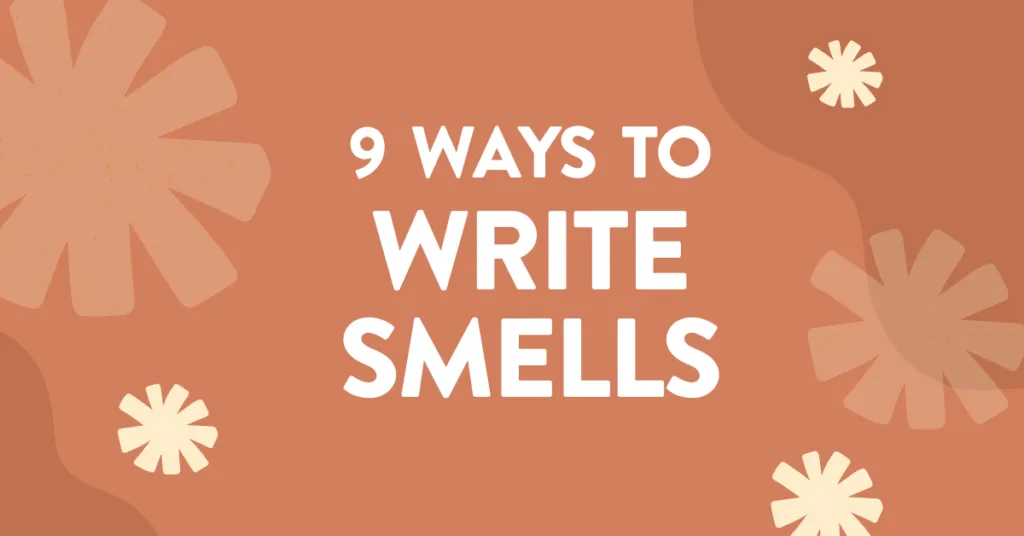
Smell is the best sense to use in your writing.
Yes: it’s better than sound, better than sight, better than touch.
There’s something about smell that bypasses all of the normal roadblocks in our brain and goes straight to memory and animal instincts.
It’s primitive.
It’s elemental.
If you want to really immerse a reader in the world of your book and make them forget everything else, use smell.
The writers below use smell in fantastic ways. For each one, I’ll show you how they’re using scent in their fiction, and also show you how to copy their techniques for your own writing.
1. Characterize through Scents
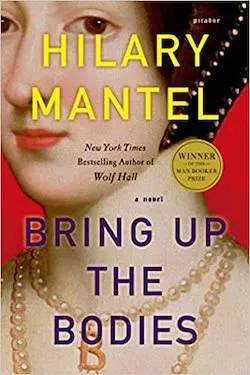
In Hilary Mantel’s novel “Bring up the Bodies,” she contrasts two characters by associating one with hideous smells and the other with a delightful smell. The shock of pairing the two together work quite well:
She is jaundiced, and there is an invalid fug in the room – the faint animal scent of the furs, a vegetal stench of undrained cooking water, and the sour reek from a bowl with which a girl hurries away: containing, he suspects, the evacuated contents of the dowager’s stomach … I could have brought her a lemon in my saddlebag, he thinks.
The bedridden person is associated with all the gross smells:
- animal scent of furs
- vegetal stench of cooking water
- reek of vomit
But to create a sharp contrast, Mantel associates our visitor with the bright, happy citrus smell of a lemon.
Mantel uses smell to help us get a feel for these characters: one has more of a sadder outlook on life, and the other more optimistic.
2. Create Layers of Smells
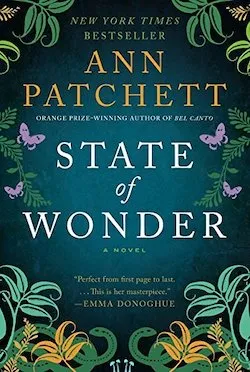
Ann Patchett, in “State of Wonder,” teaches writers that we don’t have to focus on a single smell.
Through a complex mixture of a bunch of smells, we get a sense of a place:
There were layers upon layers of scents inside the hammock – the smell of her own sweat which brought up trace amounts of soap and shampoo; the smell of the hammock itself which was both mildewed and sunbaked with a slight hint of rope; the smell of the boat, gasoline and oil; and the smell of the world outside the boat, the river water and the great factory of leaves pumping oxygen into the atmosphere, the tireless photosynthesis of plants turning sunlight into energy, not that photosynthesis had an odor. Marina inhaled deeply and the scene of the air relaxed her. Brought together, all those disparate elements turned into something wholly pleasant. She wouldn’t have thought that would be the case.
Just count the number of scents in this passage:
- boat/gasoline/oil
- river water
It’s quite a mixture that gives us a panoramic vision of this place. A 360 degree scent-tour.
I like that the narrator expects these smells to be unpleasant, but there’s a nice reversal at the end of the paragraph: actually, she loves these smells quite a lot!
3. Create Disgust
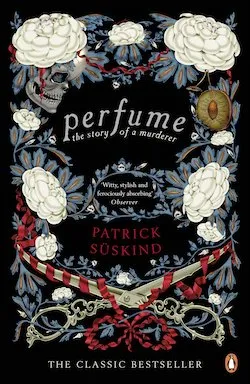
One of the best things you can do in your writing is create a reaction in your reader.
If they react in any way, it means your book is affecting them. It means they aren’t bored.
One way to get a strong reaction from your reader is to make them feel disgusted.
Often, when writers think about scents and smells, they think of the happy, wonderful smells, but in Patrick Suskind’s “Perfume,” he focuses on the revolting smells, and it’s quite powerful:
Here, then, on the most putrid spot in the whole kingdom, Jean-Baptiste Grenouille was born on July 17, 1738. It was one of the hottest days of the year. The heat lay leaden upon the graveyard, squeezing its putrefying vapor, a blend of rotting melon and the fetid odor of burnt animal horn, out into the nearby alleys. When the labor pains began, Grenouille’s mother was standing at a fish stall in the rue aux Fers, scaling whiting that she had just gutted. The fish, ostensibly taken that very morning from the Seine, already stank so vilely that the smell masked the odor of corpses.
Are you grossed out yet? Are you grimacing?
We have a litany of disgusting odors:
- Decomposing bodies
- Burnt animal horn
- Rotting melon
- Rotten fish
This is a book about someone with a remarkable gift of smell, so it’s perfectly ironic that he’s born into a cess pool of stench.
Ultimately, if you want to get a rise out of your reader, come up with the grossest three or four things you can imagine, and get your protagonist into a situation where they have to smell it.
4. Evoke Life Stages through Smell

If you want to go into the backstory of your main character, one of the best ways to do that is smell.
Here in Gillian Flynn’s “Sharp Objects,” a main character smells sex in the present moment, and thinks back to how the predominant smell of her childhood was bleach:
I was in college by the time I realized I liked the smell of sex. I came into my friend’s bedroom one morning after a boy darted past me, smiling sideways and tucking his socks into his back pocket. She lazing in bed, splotchy and naked, with one bare leg dangling out from under the sheets. That sweet muddy smell was purely animal, like the deepest corner of a bear’s cave. It was almost foreign to me, this lived-in, overnight odor. My most evocative childhood scent was bleach.
But this smell is also doing characterization: she’s no longer the type of person that likes the chemical cover-up of bleach, and its association with cleanliness.
Now she’s the type of person who loves the dirty, animal scent of sex.
Associating smells with certain stages of your character’s life really helps the reader get a handle on where they came from and where they are now.
5. Unusual Reactions to Smells
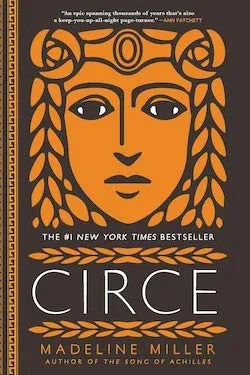
In Madeline Miller’s “Circe,” we have a goddess who gets pregnant. And suddenly, all the smells on her island that used to give her pleasure, start to make her want to vomit:
I would have laughed if I were not so ill. The sour tang of cheese in the kitchen, the salt-stink of seaweed on the breeze, the wormy earth after rain, the sickly roses browning on the bush. All of them brought the bile stinging to my throat.
Cheese, seaweed, fresh earth, and roses: these are pleasant scents. But because she is pregnant and strong smells revolt her, she describes them in unexpected ways:
- Wormy earth
- Sickly roses
Writers, don’t always describe the smell of something in a predictable way.
If your character likes the smell of a disgusting thing, or hates the smell of something lovely, that goes a long way in surprising your reader and building this character.
6. Describe Place Through Scents
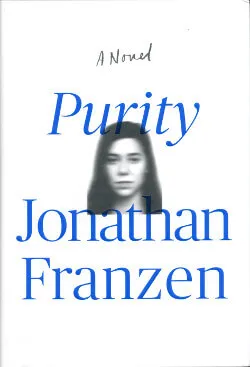
I see a lot of boring descriptions from aspiring writers.
They use lots of details and talk about how everything around their character looked.
But if you’d like to change it up, try describing a place with the limitation of only using a single sense: hearing, for instance, or … smell.
In Jonathan Franzen’s “Purity,” our main character Pip arrives in a new place and describes it solely through the sense of smell:
“But smell had also been heaven. Not outside the airport of Santa Cruz de la Sierra, where the wafts of cow shit from adjacent pastures mingled with the smellable inefficiencies of engines banned from California long before Pip was born; not in the Land Cruiser sure-handedly piloted by a taciturn Bolivian, Pedro, through diesel particulates on the city’s ring boulevards; not along the Cochabamba highway, where every half kilometer another brutally effective speed bump gave Pip a change to smell fruit rotting and things dying and be approached by the sellers of oranges and friend things who’d install the speed bumps in the first place … but when the road, after plunging through dry forest and through cooler woods half cleared for coffee plantings, finally bottomed out along a stream leading into a little valley more beautiful than any place Pip could have imagined: then the heaven had commenced. Two scents at once, distinct like layers of cooler and warmer water in a lake — some instantly flowering tropical tree’s perfume, a complex lawn-smell from a pasture that goats were grazing — flooded through her open window.”
The commute from the airport is described by:
- The smell of cow manure and ancient engines
- Rotting fruit and dying things
And then the smells transition from ugly smells into glorious smells: tree perfume and lawns.
That way the smells aren’t a list, but more of a journey, and the reader feels like they’re leaving one place and reaching a new one.
Also, I like that all the smells in this passage are a mixture of machines and nature (animals/plants). It’s a perfect encapsulation of a third world country (and I’ve been to Bolivia — I know!).
7. Create Mystery with Smells
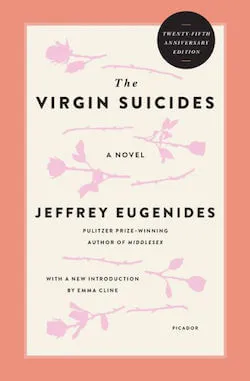
In “The Virgin Suicides” by Jeffrey Eugenides, the entire book is a mystery: why do the five girls of a religiously conservative family all commit suicide?
So at the end of the book, after the family has moved out, the boys of the town are confronted with a strange smell. And this smell is someone an answer to the mystery of why the girls killed themselves, but it’s also exceptionally mysterious in itself:
It was Uncle Tucker, too, who first detected the smell we could never identify. One morning, as Bonnie came out to the dirt mound, she left the front door open, and Uncle Tucker became aware of an odor unlike any other he had ever encountered. At first he thought it was merely an intensification of Bonnie’s wet-bird aroma, but it persisted even after she returned inside, and when we woke up, we smelled it, too. For even as the house began to fall apart, casting out whiffs of rotten wood and soggy carpet, this other smell began wafting from the Lisbons’, invading our dreams and making us wash our hands over and over again. The smell was so thick it seemed liquid, and stepping into its current felt like being sprayed. We tried to locate its source, looking for dead squirrels in the yard or a bag of fertilizer, but the smell contained too much syrup to be death itself. The smell was definitely on the side of life, and reminded David Black of a fancy mushroom salad he’d eaten on a trip with his parents to New York. “It’s the smell of trapped beaver,” Paul Baldino said, sagely, and we didn’t know enough to disagree, but we found it hard to imagine such an aroma issuing from the ventricles of love. The smell was partly bad breath, cheese, milk, tongue film, but also the singed smell of drilled teeth. It was the kind of bad breath you get used to the closer you go in, until you can’t really notice because it’s your own breath, too. Over the years, of course, the open mouths of women have blown into our faces ingredients of that original smell, and occasionally, poised over unfamiliar bedsheets, in the dark of that night’s betrayal or blind date, we’ve greedily welcomed any new particular reek because of its partial connection to the fumes that began blowing from the Lisbon house shortly after it was closed up, and never really stopped. Right now, if we concentrate, we can smell it still. It found us in our beds, and on the playground as we played Kill the Man with the Ball; it came down the stairs of the Karafilises’ so that Old Mrs. Karafilis dreamed she was back in Bursa cooking grape leaves. It reached us even over the stink of Joe Barton’s grandfather’s cigar, as he showed us the photo album of his Navy days, explaining that the plump women in petticoats were only his cousins. Strangely enough, even though the smell was overpowering, we didn’t once think of holding our breaths, or, as a last resort, breathing through our mouths, and after the first few days we sucked in the aroma like mother’s milk.
These are the important bits of information in that passage:
- The smell is too syrupy to be death
- The smell is like sex (trapped beaver)
- The smell is the embodiment of sexual desire
- The boys of the town ended up liking the smell
So what can we learn from this passage?
It’s okay to have smells be metaphorical . Don’t limit your writing to the smell of meat or with the smell of goats. This is the smell of sexual desire.
This smells symbolizes memory . The family has left town, but the boys of the town cannot forget them. They keep on smelling them in their abandoned house. That’s because these girls who committed suicide haunt the boys of the town — they won’t be forgotten.
It’s okay to have extended smells . Most writers will bring up a smell and then move on to something else in the next part of the sentence. Eugenides really dwells with this smell for quite a long time — almost 500 words!
8. Contrast Your Smells
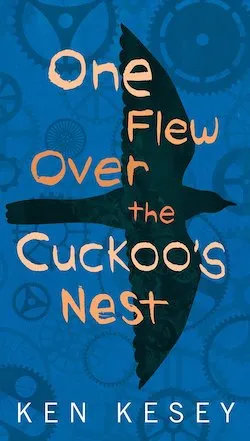
It’s always a good idea to contrast two types of smells.
One that’s enjoyable, one that’s horrible. Or one that has good connotations/memories, and one with terrible connotations/memories.
Here in Ken Kesey’s “One Flew Over the Cuckoo’s Nest,” we see a sharp contrast between ugly smells and healthy ones, with Jack Nicholson’s character McMurphy representing the healthy work:
“Sweeping the dorm soon’s it’s empty, I’m after dust mice under his bed when I get a smell of something that makes me realize for the first time since I been in the hospital that the big dorm full of beds, sleeps forty grown men, has always been sticky with a thousand other smells – smells of germicide, zinc ointment, and foot powder, smell of piss and sour old-man manure, of Pablum and eyewash, of musty shorts and socks musty even when they’re fresh back from the laundry, the stiff odor of starch in the linen, the acid stench of morning mouths, the banana smell of machine oil, and sometimes the smell of singed hair – but never before now, before he came in, the man smell of dust and dirt from the open fields, and sweat, and work.”
What a list that is!
13 smells, most of them a little unpleasant, and then the healthy smell of dust and dirt and sweat and work.
Just figure out whether you want to end on an happy note, with a good smell, or end on a sad note with a hideous smell.
9. Emotional Impact
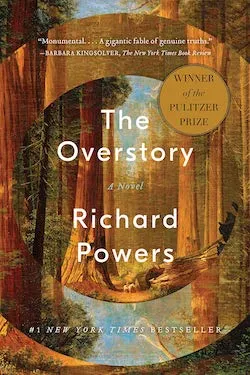
Smells have strong emotional impacts, and you should be calling attention to that.
Don’t just describe what something smells like: tell the reader what impact that has on your character.
Check out how Richard Powers handles the smell of a tree in “The Overstory”:
“And in a few steps, she’s outside. The smell is on her before she reaches the trees—the scent of resin and wide western places. The clean smell of her childhood’s only untouched days. The music of the trees, too, tuning the wind. She remembers. Her nose slips into one of those dark fissures between the flat terra-cotta plates. She falls into the smell, a devastating whiff of two hundred million years ago. She can’t imagine what such perfume was ever meant to do. But it does something to her now. Mind control. It’s neither vanilla nor turpentine, but replete with highlights of each. A shot of spiritual butterscotch. A sprig of pineapple incense. It smells like nothing but itself, pungent and sublime. She breathes in, eyes closed, the tree’s real name.”
This is a smell that makes her remember her childhood. A mixture of vanilla and turpentine that makes her feel like she knows this tree, like she’s having a spiritual encounter with it.
This passages goes far beyond mere description and really gets into the philosophy of what a tree smell is, and its purpose, and how it affects this character.
Bonus Smells:
Donna Tartt, “The Goldfinch” Nostalgic smells.
“More than anything I was struck by the smell — for the plastic, pool-liner odor of masking tape had grown overwhelming from being shut up in such a small space, an emotionally evocative odor I hadn’t remembered or thought of in years, a distinct polyvinyl reek that threw me straight back to childhood and my bedroom back in Vegas: chemicals and new carpet, falling asleep and waking up every morning with the painting taped behind my headboard and the same adhesive smell in my nostrils.”
Ngugi wa Thiongo’o “Wizard of the Crow” The stench of a corrupted soul.
“I can’t quite explain it, but the smell was stronger than that of rotting garbage, a rancid belch, or a ripe fart. Sometimes when I am walking the streets I can detect it from among all other scents in the air and often I come across people and buildings that have it about them more often and more strongly than others. But by the same token I also come across people whose fresh smell seems to drive the foulness away. There are times when the foul and the fresh appear to struggle for the right of passage into my nostrils, like evil and good spirits fighting for the domination of the soul.
“But then Constable Arigaigai Gathere arrives. The whole house stunk during his entire stay. And even after he left, the heavy stench remained. That is what propelled me into a cleansing frenzy.”
Still, no matter what he did, the stench would not go away. Maybe a dead rat was rotting somewhere in the house, so he searched under the bed, the chairs, everywhere, turning things over, but to no avail. Tired and frustrated, he sat by the table in the living room. Suddenly he knew the source of the foulness: the police officer’s money. KamltT immediately put all the notes in a plastic bag, put the bag into an empty cocoa can, and closed the lid. He dug a hole outside and buried the can.
“The smell grew faint but was still in the air,” he told Nyawlra. “But when you entered the house it disappeared altogether, replaced by the fresh scent of flowers.”
Related posts:

Leave a Reply Cancel reply
Your email address will not be published. Required fields are marked *
Thank you for the post. I learned a lot. Never thought about including smells in the ways presented here. I am looking forward to implementing these in my writings.
Well, thanks for this, but, from the excerpts I would be quite put off of reading those books! In that way, I suppose, you could say the sections about scent were quite compelling, like watching a train wreck, but not effective at making a happy reader! Or perhaps I am too scent-sensitive!
Yeah, it really depends on what type of book you’re writing and what audience you’re shooting for.
But in general, I would say getting a rise out of readers is essential — making them long for the smell of a cookie or recoil from the smell of manure.
Both can be good writing.
This was a great article! Obviously I’ve encountered the description of smells while reading but never thought to incorporate them in my writing with so much intention. Thank you for dissecting this for us!
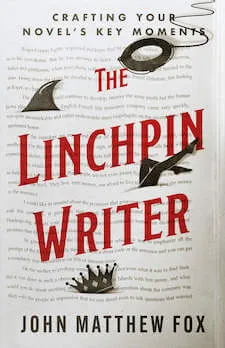
Every writer NEEDS this book.
It’s a guide to writing the pivotal moments of your novel.
Whether writing your book or revising it, this will be the most helpful book you’ll ever buy.
Learn how to:
- Nail chapter endings
- Surprise your reader with plot twists
- Describe a character for the first time
- Write a killer ending
How to Use the Sense of Smell in Your Writing
- May 23, 2022

This blog post is part of a series about why we need to use sensory imagery in our writing. As we learned in my introductory post about sensory imagery , the sensory details draw readers into the setting and allow them to feel a character’s existence. These details must be specific, concrete, and appeal to the senses, whether seen, heard, smelled, tasted, or touched.
In this post, we explore the sense of smell .
Scents can evoke powerful memories.
One of the most remarkable aspects of the senses is how they span time. Our senses connect us intimately to the past in a way our ideas cannot, and the sense that does this more powerfully than any other is the sense of smell.
Regardless of how unexpected or fleeting, a scent can open the floodgates of memory. A whiff of Coppertone might bring you back to summers on Cape Cod: the grit of sand stuck in your swimming suit; strawberry ice cream on your tongue; fireflies blinking in the tall grass; the drone of a foghorn in the night. A particular perfume might evoke memories of playing in your mother’s closet, slipping your tiny foot into her shoes.
When I was growing up, we lived in Europe, and whenever we traveled back to the States, we went by ocean liner. Some years ago, my brother and I were walking through a basement corridor connecting two municipal buildings when, at the same time, we looked at each other and said, “the ship!” I can’t tell you what that smell was, possibly a combination of building materials and cleaning products, but whatever it was, it was distinctive enough to trigger the same memory in both of us.
Six fascinating facts about the sense of smell.
– We have the ability to detect over 10,000 different odors.
– We can distinguish between the scent of a male and a female.
– We breathe about 23,000 times a day
– We smell with every breath we take.
– It takes approximately five seconds to complete the average breath, and in that time, molecules of odor flood through our system.
-Breaths come in pairs, except when we are born and take our first breath, and when we die and take our last.
Each of us has a smell that is as unique as our fingerprints. Meat eaters smell different from vegetarians, children smell different from adults, and smokers smell different from non-smokers. People also smell different due to health, diet, medication, and even occupation. Think about this when creating your characters.
Helen Keller maintained she could tell what someone did for a living simply by smelling them, that the odors of their occupation clung to their clothes. She says, “When a person passes quickly from one place to another, I get a sense impression of where he has been—the kitchen, the garden, or the sickroom.” Think of how your clothes smell after being at a fish restaurant or one that does a lot of deep-fat-frying. Think of the clues you can drop about a character’s behavior/actions/whereabouts through the odors that cling to their clothes.
Writers have embraced the sense of smell throughout history.
Many writers are acutely tuned into the sense of smell and use it to bring their characters to life. Colette’s flowers carried her back to childhood gardens. Virginia Woolfe had her “parade of city smells.” Joyce had memories of baby urine and oilcloth. Dostoevsky wrote about “Petersburg stench.” Flaubert’s rhapsodic accounts of smelling his lover’s slippers and mittens. Walt Whitman’s praise of sweat’s “aroma finer than prayer.” Milton’s description of the odors God finds pleasing to His divine nostrils and those preferred by Satan.
Using the sense of smell can be challenging, but it’s worth the effort.
While our sense of smell is incredibly precise, it’s almost impossible to describe in words something to someone who hasn’t smelled it before. Try describing the smell of sheets dried in the sun, the interior of a brand new car, the difference in the scent of a yellow rose from a pink rose or a white one, the smell of a baby fresh from a nap.
While the connection between smell and memory is strong, the connection between smell and language is weak. When we see something, we can describe it in all its nubby detail and colorful glory, but what are the features of a smell?
We either describe smells in relation to other things – flowers, food, objects – or we qualify them with adjectives such as – disgusting, lovely, intoxicating . Think about it. Try and describe how your lover, child, or pet smells. It’s not easy, but you can do it.
Now it’s your turn to see how the sense of smell can enrich your writing.
You can use the prompts to explore your memories or apply them to a character—you’ll be amazed at how much you discover. These prompts work well for both fiction and nonfiction.
How to start:
Set your timer for 10 minutes. Write the prompt at the top of your page and begin writing without thinking—go where the very first thought takes you. Keep your pen moving. Breathe. Don’t stop until the time is up. Suspend judgment. Be curious. Have fun!
Write by hand. Writing by hand connects the brain and body and, I believe, the heart. It’s especially helpful in getting those first thoughts onto the page.
What’s the most unusual smell you (or your character) have ever encountered?
Go outside for a while, and when you come back inside, describe how your house smells.
Think of a smell you (or your character) strongly dislike and write about the emotion it evokes.
What does a hug from your favorite person smell like?
Describe the scent of your favorite color.
Thank you for allowing me to bring you to your senses. Let me know how it goes in the comments box below.
Follow me on social:
Share this post:
2 Responses
Your blog is wonderful, Kathryn. Your photos stir emotions. Your words invite inspiration.
Thank you, I’m glad you enjoyed it.
Leave a Reply
Your email address will not be published. Required fields are marked *

Hi, I’m Kathryn Kay, the founder of A Writer Within. I offer support and inspiration to women writers through one-on-one coaching, editing services, and week-long retreats in Tuscany. My focus is on getting writers into the creative flow, beyond their internal critic, and their very best stories onto the page. If you have a writer within, let’s set her free!
DON'T BE LEFT OUT! Subscribe to my Newsletter

JUMPSTART YOUR WRITING PRACTICE in Just 10 Minutes a Day
Ready to unleash your writer within….but not sure how?
This series contains everything you need to kickstart your writing.

“After reading Kathryn Kay’s lovely debut, I had the best kind of cry. What a beautiful, emotional novel. I loved the way she writes about love, necessary secrets, and the dark unknowability of another person, no matter how close. She writes so well about the vulnerability of strong women, the complexity of long friendship, the ways mothers and daughters protect each other, and sweet, tender forgiveness.” – Luanne Rice, New York Times bestselling author
FREE RESOURCE: 40 Question For Creating Compelling Characters
Want to create more interesting characters?
This free gift contains everything you need to start creating compelling characters your readers will remember forever!

© Copyright 2023 A Writer Within. All rights reserved. Website built with care by ForegroundWeb
Subscribe to A Writer Within today to receive news and more:
Embrace Your Writer Within
An online small-group writing workshop for women..
If you aren’t ready to commit to a weeklong writing retreat or 1:1 coaching, but it would help to have support and inspiration —this is a great ( and affordable ) alternative for you.
Tuesdays, 12 pm EST/9 am PST From Nov 12 to Dec 17, 2024

Subscribe to A Writer Within
Sign up today to get the Free Resource: “40 Questions For Creating Compelling Characters” and receive news and more:

IMAGES
VIDEO
COMMENTS
Use these words that describe smells when you are setting a scene. anosmic – odourless, no smell at all; antiseptic – disinfectant smell / or no smell; aroma – a smell that is strong but pleasant; comforting – pleasant aroma; delicate – subtle, faint, smell that is not overpowering; evocative – a smell that makes you think of ...
Scent is an incredibly evocative detail to explore in creative writing, but too often writers neglect the possibilities that scent descriptions open up in terms of establishing setting and emotion in their work.
Describing smells effectively in writing can create deeper, immersive experiences for readers. Developing a strong vocabulary and understanding the science of smell helps writers enhance their storytelling.
When describing a smell, it's important to be as specific as possible, and to use adjectives that will help the reader to imagine the scent. With these tips, you'll be able to capture any smell you encounter and make your readers feel like they can smell it too.
Examples of Natural Smell Descriptions in Writing. Three Broad Categories of Natural Smell. Fresh and Light. Deep and Pleasant. Richly Unpleasant. More? Related posts: Vivid Description in Creative Writing Examples.
You may be tempted to use the following words to describe smell- delicious/good, or bad/awful- but surely you can paint a better picture than that. We’ve compiled a list of words to describe various smells/odors to help improve your writing.
Check out 30 of the Best Words to Describe Smell in Your Writing. If you want to make your readers feel what you’re describing, use the power of scent. Understanding how compelling the sense of smell can be, use it to entice your reader.
Discover 3 writing techniques that help you describe a smell more accurately & vividly (with explanation + examples).
If you want to really immerse a reader in the world of your book and make them forget everything else, use smell. The writers below use smell in fantastic ways. For each one, I’ll show you how they’re using scent in their fiction, and also show you how to copy their techniques for your own writing. 1.
One of the most remarkable aspects of the senses is how they span time. Our senses connect us intimately to the past in a way our ideas cannot, and the sense that does this more powerfully than any other is the sense of smell.